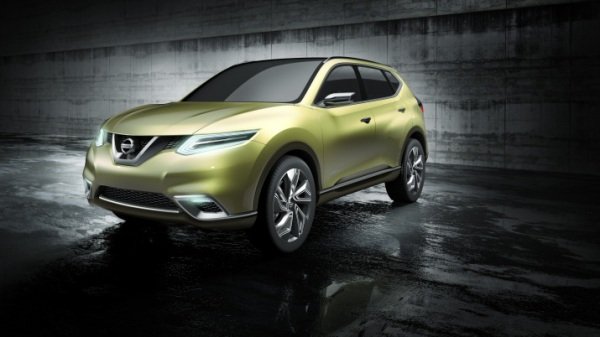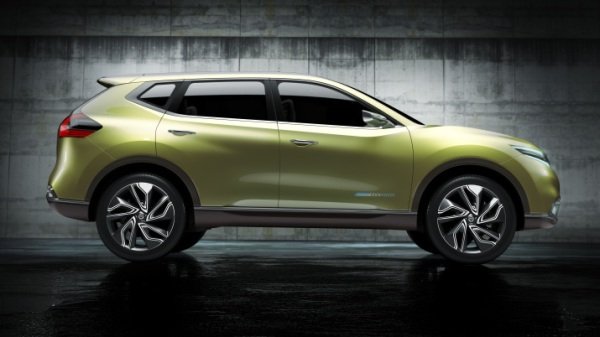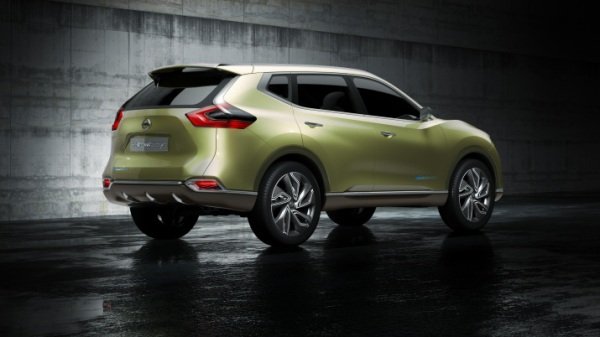Seven Passenger Hybrid Crossover could find mass appeal
Not nearly as sexy as the Infiniti EMERG-E, the Nissan Hi-Cross may ultimately find a significantly larger market if developed.
One of the fastest growing segments in the U.S. market is the crossover vehicle. The difference between a crossover and an SUV is one of platform – the crossover vehicle rides on a modified car chassis while the SUV is a truck with a body rather than a cab and a bed. Each has their strong points. Both SUVs and crossovers offer all-wheel drive, which can be of value in those segments of the country where weather can impact ones daily commute. In the real world, most owners never take these vehicles off road in any heavy duty recreational capacity. Serious offroaders will track down an old beater and modify it to suit their needs. The truck chassis of an SUV allows for greater towing capacity and more severe off road abuse but in return the owner sacrifices ride, handling and, especially important in today’s environment, fuel economy. The car based crossover provides improved fuel economy, but also improved ride quality, better handling and often more comfort and convenience features as well. While we’re at it, we will explain the difference between all-wheel drive and four-wheel drive. Trucks and many SUVs offer four-wheel drive. When engaged, all four wheels are powered at all times with 50 percent of the power going to the front wheels and the other 50 percent of the power going to the rear wheels. When not engaged, 100 percent of the power generally goes to the rear wheels. Crossovers on the other hand, quite often will power either front wheels or rear wheels exclusively until the vehicle hits a slippery patch of road. Sensors notice that traction is being lost and start transferring power to wheels on the other axle – be it front or rear. Crossovers can be natively front- or rear-wheel drive. Once the dangerous road situation is safely passed, power returns to its two-wheel drive configuration. This is all done automatically with no input needed on the part of the driver. Some crossovers will always send a certain amount of power to both axles and vary it front to rear based on road conditions. Now with our little vehicle design lesson out of the way let’s take a look at the Hi-Cross Concept.
The Hi-Cross Concept is about the same length as the Nissan Rogue. One difference – it rides on a 3.6″ longer wheelbase, which will give it more room for people and stuff inside, as well as improved ride quality on undulating road surfaces. The most significant difference between these two vehicles though, is not the third row included in the Hi-Cross for two more passengers. No, that claim gets awarded to the use of a 2.0-liter direct injection four cylinder mated to an electric motor powered by lithium ion cells. Sound familiar? Add Nissan’s next generation Continuously Variable Transmission (CVT) and this powertrain should provide fluid acceleration and smooth driving during your daily commute. In addition, this next generation transmission alone should account for a 10 percent improvement in fuel efficiency due to its broader operating range over the current generation CVT.
While nothing more than a concept at this stage, the Hi-Cross Concept offers an appealing look into one possible Nissan future – one that is moving in the direction of innovation, lower emissions and improved fuel economy.





So is it supposed to be a plug-in or a hybrid?
The Hi-Cross is a hybrid, not a plug-in. Infiniti introduced a combination of the LEAF technology with an internal combustion engine in the Infiniti M Hybrid. Look for future Nissan and Infiniti models to continue this trend, using both 4- and 6-cylinder engines.
Another hybrid vehicle review!
Does it mean the Leaf is no more the matter of this site?
Paolo – Welcome to Living LEAF. The 2012 LEAF was launched in September of last year. There have been no changes to the 2012 model since its introduction. We subscribe to many news feeds looking for new Nissan LEAF news, and other relevant information for our readers, including alternatives to the LEAF and other vehicles that multiple vehicle households may wish to consider owning, in addition to the LEAF. Most LEAF owners own multiple vehicles. To that end, we are always looking to provide useful information to our readers in order for them to learn of these alternatives. Our primary focus will continue to be the Nissan LEAF.